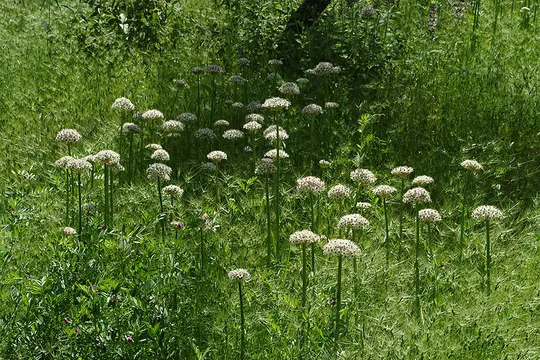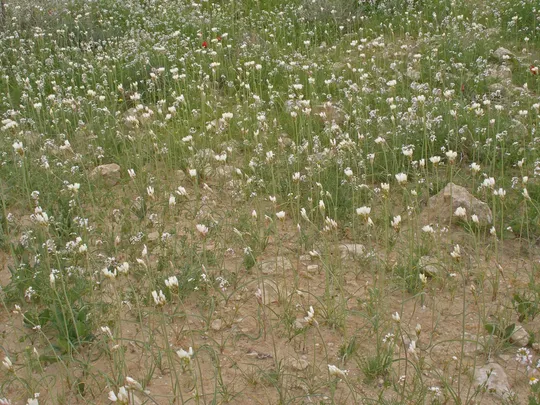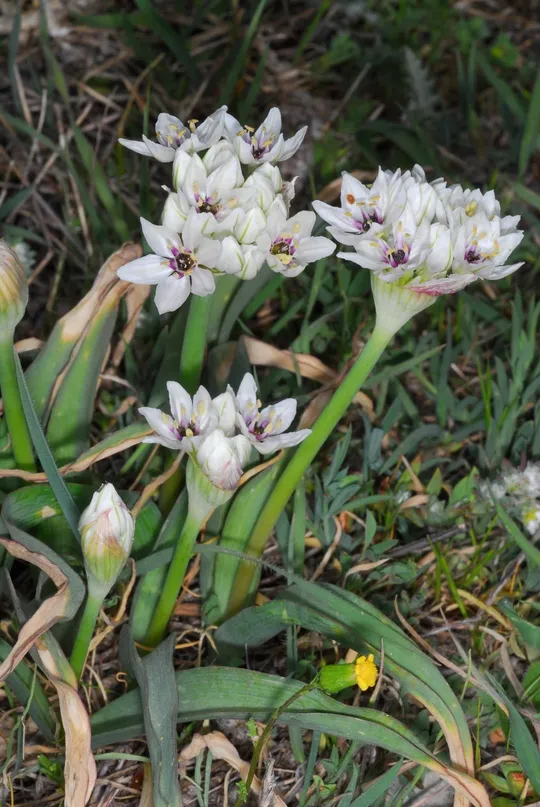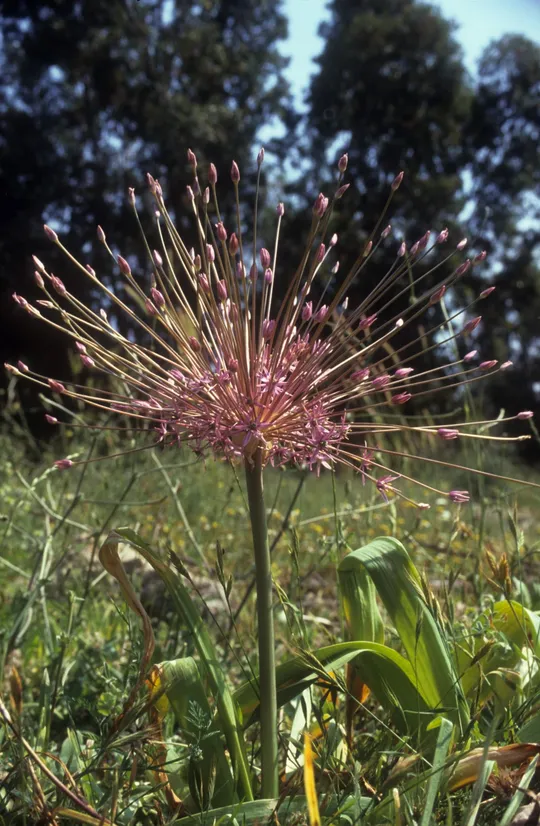Sinai Garlic
Allium sinaiticum
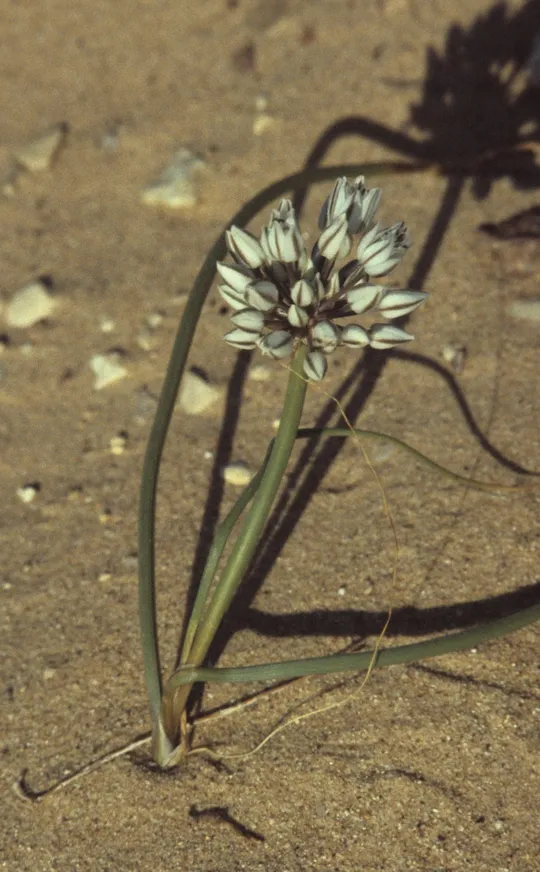
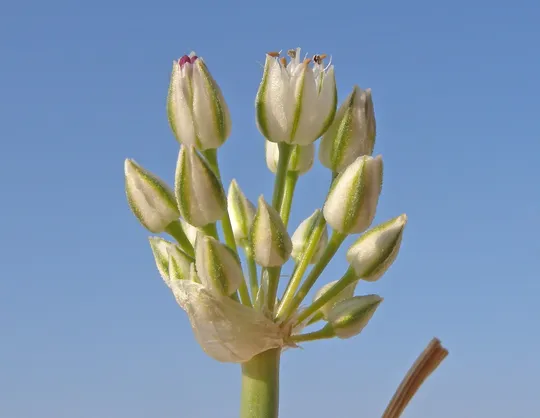

Allium sinaiticum is found at 16
sites in the Arava, the Elat region and the southern Negev. As it blooms only
in rare rainy years and is difficult to locate, it is estimated that it is
found on 22 sites. In the Arava it grows in the Hatseva region, mainly in the Shezaf Sands, in the nature reserve and outside it, and also
in Tsofar, Samar and at km 32 on the Arava highway. In the Elat region it was
found twice in the Timna area as well as in Wadi Shani. Oz Golan was the first
to report A. sinaiticum in spring 2010 from the southern
Negev in the Ardon Valley in the Makhtesh Ramon.
Sands in the
extreme desert, together with herbaceous plants or Haloxylon persicum. The
plant is often so covered with sand that only its inflorescence and the tips of
its leaves protrude above the ground.
For the genus –
see Allium tardiflorum. Allium
sinaiticum was collected in Israel only a few times. The species was
described from the Sinai and hence its name. It belongs to the Allium
section in the genus Allium. This section has many species, fourteen of
which grow in Israel. The section characterized by the filaments of the inner stamens
that end in three teeth, with the central one bearing the anther. A. artemisietorum that belongs to the same section, is a similar plant
that is found throughout the desert region in Israel, in rocky-stony habitats. Unlike
A. sinaiticum, it has a characteristic tall, thin stem and leaves that
are shorter than the inflorescence.
A. sinaiticum grows in
extreme desert areas where the average annual rainfall is usually below 50 mm.
In this climatic region rain events are extremely random and occur only once
every few years. Only once in several years is there sufficient precipitation
in the fall or early winter, to enable herbaceous vegetation to germinate, bud
and bloom. A. sinaiticum bulbs"wait"
many years for a rainy year that enables budding and even flowering – in dry
years the bulbs do not bud, in low-rainfall years it produces only a few leaves
that replenish the bulb with storage substances, and in rainy years the plant
will also bloom.
·
Allium sinaiticum was first collected and seen at the Arava sites in the early 1970s.
Since the 1980s there is an increasing trend in the number of sites reported,
as a result of more thorough sampling. In 2010 another region was added – the
southern Negev. These data do not yet allow a reliable evaluation of the
long-term trends in the number of its sites and regions to be made.
·
A. sinaiticum
populations usually number single to tens of plants, although their appearance
is extremely irregular and is condition on large rain events, which are rare in
its distribution area.
·
The declining trend in precipitation and in the number of
effective rain events observed in the extreme south may cause local
extinctions.
·
A. sinaiticum
is protected in Israel in the Wadi Shezaf, Tsinim Cliff and Massif Elat nature
reserves.
·
A. sinaiticum
is classified as a red species (EN) in Egypt's Red Book as well (El Hadidi and
Hosni, 2000, 2002).
An Allium sinaiticum population
at one site in each region should be regularly monitored, in order to study the
long-term appearance, germination and flowering trends in each population.
Southern Israel,
southern Jordan, Egypt (Sinai) and northwestern Saudi Arabia.
Allium sinaiticum
is a geophyte of extreme desert regions in Israel that grows in sandy habitats.
It is a sub-endemic species that is also endangered in Egypt.
קולמן, פ. 1985. הסוג שום בישראל. רתם 15: 78.
El-Hadidi, M.N. & Hosni, H.A. (2000, 2002). Flora Aegyptiaca, Vol. 1, Part 2. The Palm Press, Cairo.
Current Occupancy Map
| 1000 squre meter pixel | 5000 squre meter pixel | 10000 squre meter pixel | |
|---|---|---|---|
| number of observations | 0 | 0 | 0 |
| in total pixels | 0 | 0 | 0 |
| Family | Liliaceae |
| Classification | On the endangered species list |
| Ecosystem | Desert |
| Chorotype | Eastern Saharo - Arab |
| Conservation Site | Shezaf Sands Nature Reserve |
| Rarity |
1
2
6
|
|---|---|
| Vulnerability |
0
2
4
|
| Attractiveness |
0
0
4
|
| Endemism |
0
1
4
|
| Red number |
1
3.2
10
|
| Peripherality | S |
| IUCN category | DD EW EX LC CR EN VU NT |
| Threat Definition according to the red book | Vulnerable |
 Based on:
Based on:
